Stink Bugs on Solanaceous Crops
Return to Insect Pests
Stink bugs (brown: Euschistus servus; green: Acrosternum hilare; brown marmorated: Halyomorpha halys). Stink bugs are about ½ to ¾ inch long and are common pests in Kentucky. They feed on plants and fruit by inserting their needle-like mouthparts into stems, leaves, or seed pods. While feeding, they inject materials into the plant to aid in digestion and sap removal. Adult stink bugs can be difficult to manage with insecticides. Stink bugs commonly feed on pepper and tomato fruit, causing significant damage that extends from the surface into the fruit. The brown marmorated stink bug is new to Kentucky and has the potential to build to high numbers on and cause extensive damage to many fruit and vegetables, including solanaceous crops. Penetration by the mouthparts can cause physical damage—much like stabbing the plant with a fine needle—and the materials injected can also damage plant tissues. A combination of mechanical and chemical damage may be responsible for the injury and symptoms seen in the field.
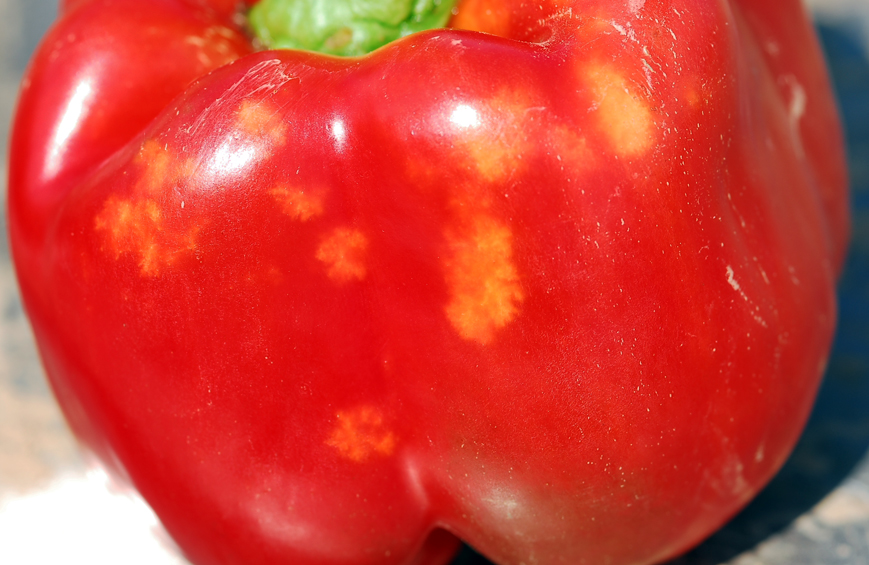
External stink bug damage on red pepper.
(Photo: UK Vegetable IPM Team)
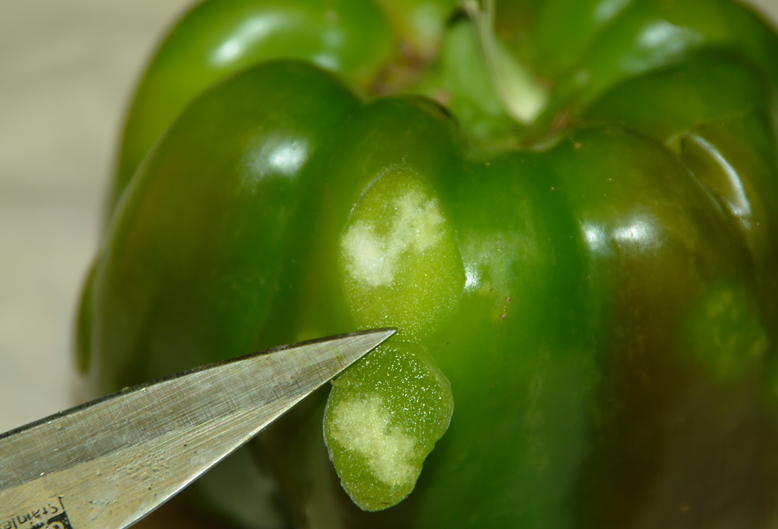
Internal stink bug damage on green pepper.
(Photo: UK Vegetable IPM Team)
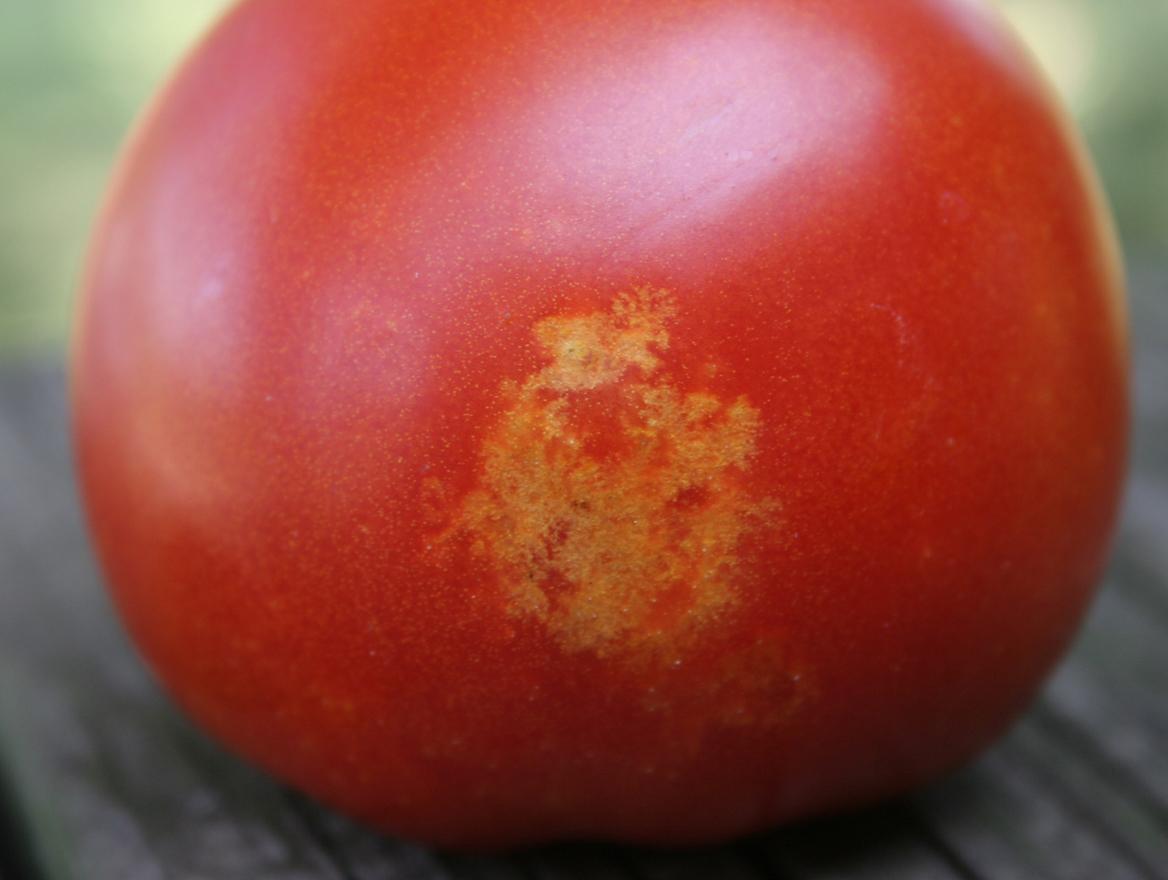
External stink bug damage on tomato.
(Photo: UK Vegetable IPM Team)
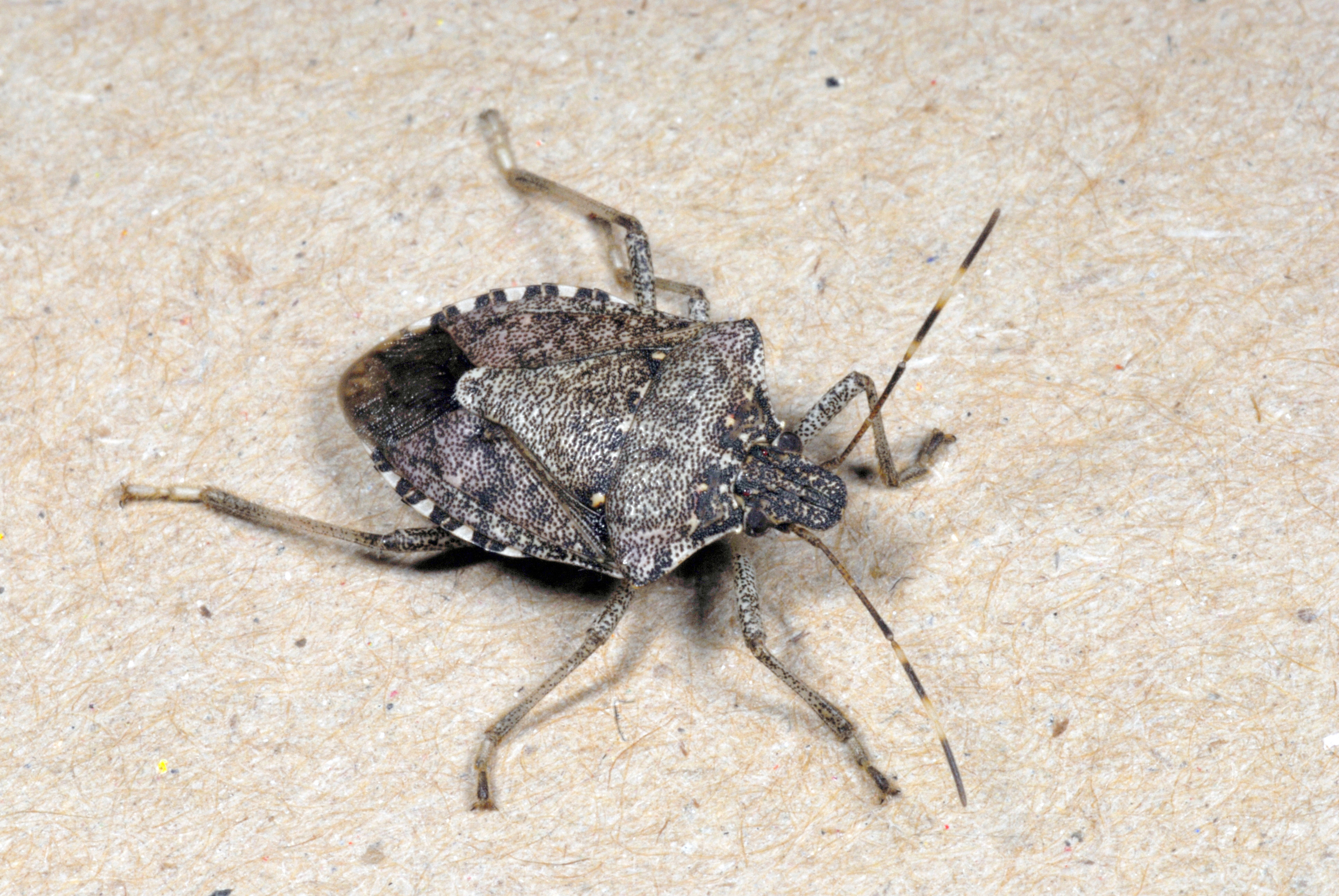
Adult brown marmorated stink bug.
(Photo: UK Vegetable IPM Team)
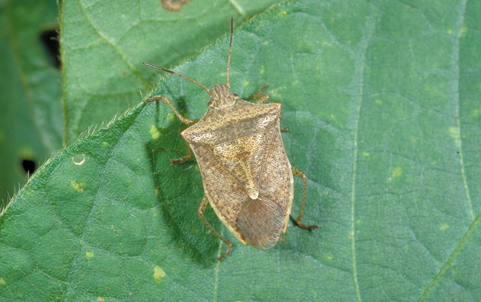
Mature brown stink bug.
(Photo: UK Vegetable IPM Team)
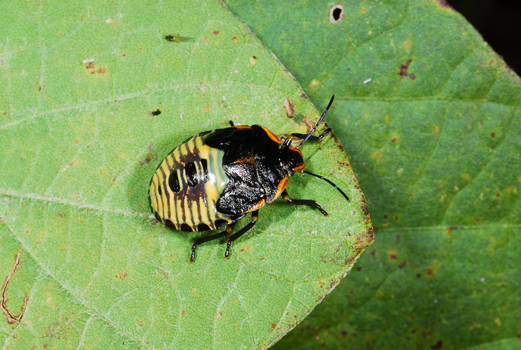
Immature green stink bug.
(Photo: UK Vegetable IPM Team)
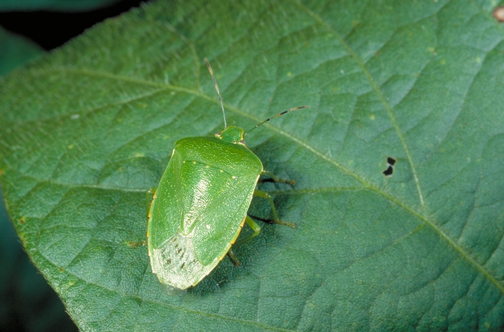
Mature green stink bug.
(Photo: UK Vegetable IPM Team)
